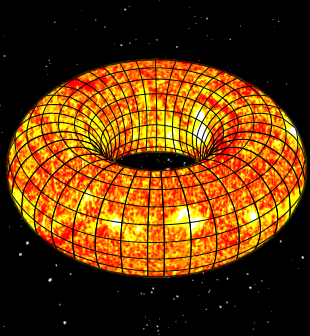Fusion record felled
 Scientists have set a new record for a sustained fusion reaction.
Scientists have set a new record for a sustained fusion reaction.
Researchers at the Joint European Torus (JET), a fusion experiment in the UK, have been able to generate 59 megajoules of heat during a five-second burst of fusion.
The new record is more than double the previous record of 21.7 megajoules set in 1997 by the same facility.
“These landmark results have taken us a huge step closer to conquering one of the biggest scientific and engineering challenges of them all,” said Prof Ian Chapman, the chief executive of the UK Atomic Energy Authority.
“It’s clear we must make significant changes to address the effects of climate change, and fusion offers so much potential.”
The toroidal (doughnut-shaped) JET contains plasmas (highly ionised gases) that can be heated to 150 million degrees Celsius - about 10 times hotter than the centre of the sun.
In these extreme conditions, atomic nuclei fuse together to form new elements and release vast amounts of energy.
The same fusion reactions power the Sun and are responsible for many of the rare elements found on Earth.
JET is investigating whether fusion is feasible with a fuel based on two isotopes of hydrogen known as deuterium and tritium which combine to form helium gas.
The latest results suggest it is suitable. It is good news for ITER - a larger fusion project being built in the south of France.
ITER is scheduled to start burning deuterium-tritium fuel in 2035 and ultimately generate more heat than is needed to keep its plasma at high temperature.
Following that, scientists want to build an even larger European demonstration power plant that can produce more electricity than it uses and is hooked up to the grid.
Researchers are chasing this goal of gain-making fusion energy, because it does not release greenhouse gases. Also, 1kg of fusion fuel contains about 10 million times as much energy as 1kg of coal, oil or gas.







 Print
Print